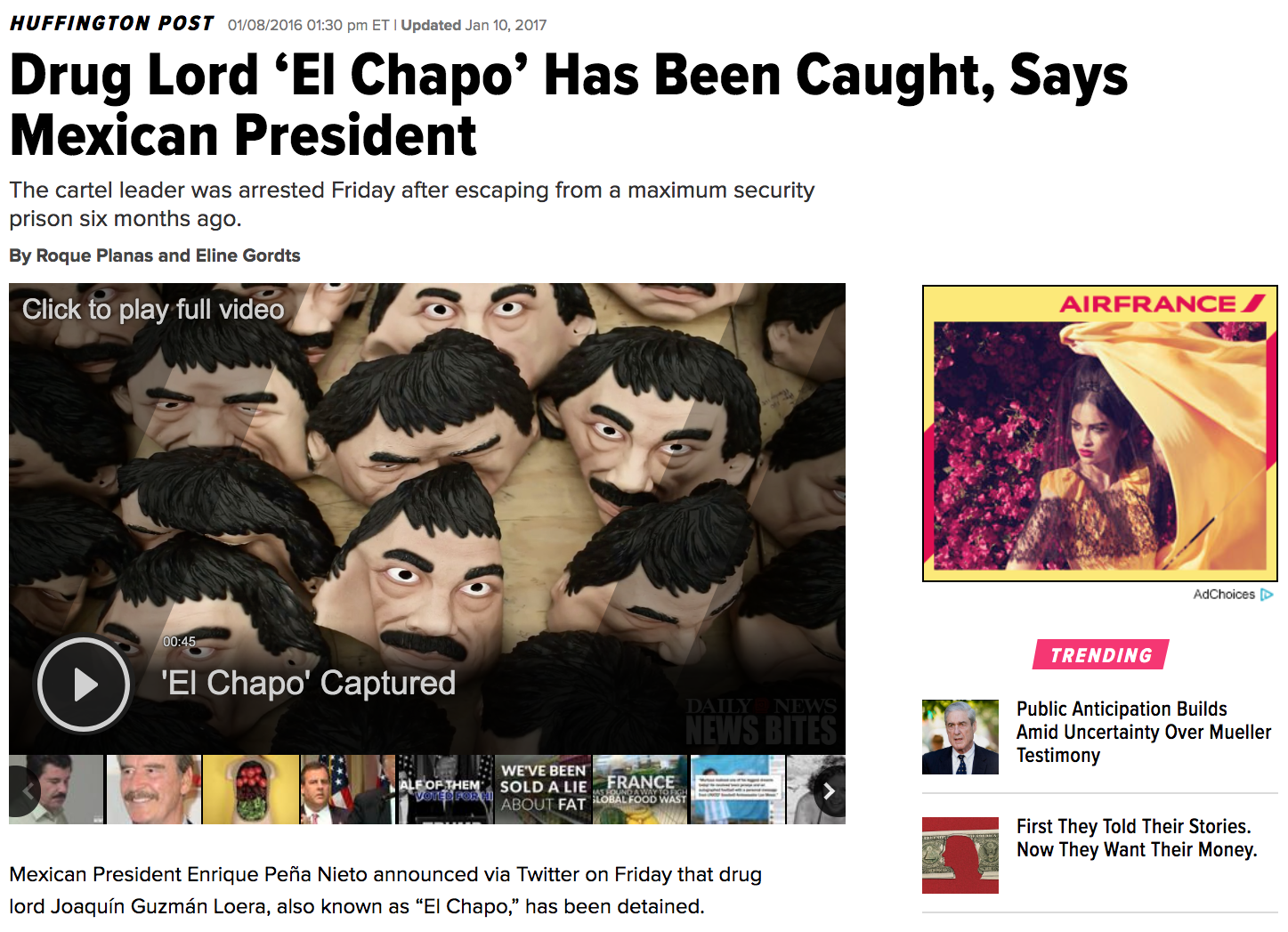"Drug Lord ‘El Chapo’ Has Been Caught, Says Mexican President"
Positive

Positive articles tend to share with the reader Government milestones that show progress in the development of public policies, events that praise Mexico's cultural heritage, or the reinforcement of commercial ties and agreements that will benefit the economy.
Articles about the war on drugs and the Mexican Cartels gravitate towards the negative side of the spectrum. Nevertheless, here we have an example of a piece that acknowledges the work of the military and the police. More importantly, it also quotes the Mexican President and the DEA highlighting the importance of capturing the most important drug trafficker.
'...Peña Nieto praised law enforcement in a televised speech Friday afternoon, saying the arrest was a result of months of intelligence-gathering that eventually allowed authorities to penetrate Guzmán’s operation.'
...“Today, Mexico confirms that its institutions have the necessary capability to confront and overcome those who threaten the safety of Mexican families,” Peña Nieto said.
...'The U.S. Drug Enforcement Administration praised Mexican officials on Friday for recapturing Guzmán, saying the agency was “extremely pleased” with the arrest.'
You can read the whole article here


